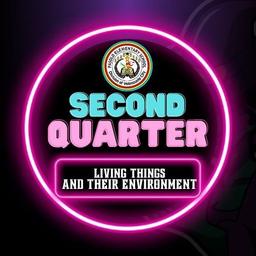
SCIENCE4 - Q2 - STRUCTURE AND FUNCTIONS OF HUMAN BODY ORGANS - QUIZ
Quiz by STEPHANIE MACALINAO SALOM
Feel free to use or edit a copy
includes Teacher and Student dashboards
Measures 1 skill from
Track each student's skills and progress in your Mastery dashboards
- edit the questions
- save a copy for later
- start a class game
- automatically assign follow-up activities based on students’ scores
- assign as homework
- share a link with colleagues
- print as a bubble sheet
- Q1
Which of the following is NOT a function of the bones?
help you move
digest the food that we eat
protect our internal organs
provide shape and support
30sS4LT-IIa-b-1 - Q2
What is the main function of the muscles?
movement
stretching
relaxing
protection
30sS4LT-IIa-b-1 - Q3
Which of the systems work together to make your body move?
Urinary and Circulatory System
Digestive and Skeletal Systems
Muscular and Skeletal Systems
Skeletal and Circulatory Systems
30sS4LT-IIa-b-1 - Q4
Which of the following statements is CORRECT?
Bone is a fleshy and non-living structure.
Bone serves as the control center in our body.
Bone protects and supports the body and its organs.
Bone is where most calcium is made.
30sS4LT-IIa-b-1 - Q5
How does walking show the coordinated work of the skeletal and muscular system?
The muscles pull the bones to move.
The bones pull the muscles to move.
The muscles push the bones.
The muscles and bones pull against each other.
30sS4LT-IIa-b-1 - Q6
Which of the following bones protect the brain?
skull
pelvic
ball and socket
ribs
30sS4LT-IIa-b-1 - Q7
Which of the following bones help protect the urinary bladder, sex organs and other internal organs? It also helps support the body when we sit.
pelvic bone
spinal cord
skull
rib cage
30sS4LT-IIa-b-1 - Q8
Muscles can be voluntary or involuntary. Which among the muscles is considered voluntary?
sending information that comes from the brain
beating of the heart
digesting of food in the stomach
stretching of arms and legs
30sS4LT-IIa-b-1 - Q9
It is a muscular organ about the size of a man’s closed fist and is roughly cone shaped.
lungs
heart
brain
stomach
30sS4LT-IIa-b-1 - Q10
Which of the following statement is NOT true?
The heart receives information from the sense organs.
Lungs filter and purify the air.
The heart is a hollow muscular organ about the size of a man’s closed fist.
The brain consists of three major parts: the cerebrum, cerebellum, and brain stem.
30sS4LT-IIa-b-1 - Q11
It is a human organ that gets oxygen and remove carbon dioxide from the blood. It helps the body to filter and purify the air that we breath in.
Lungs
Heart
Brain
Spinal Cord
30sS4LT-IIa-b-1 - Q12
It is the control center of the body. It receives information from the sense organs. It interprets the message it receives and tells the concerned body parts what to do.
Spinal cord
Heart
Brain
Lungs
30sS4LT-IIa-b-1 - Q13
The brain has three major parts: the cerebrum, the cerebellum, and the medulla oblongata or brain stem. Which of them covers the largest portion of the brain?
brain stem
cerebellum
cerebrum
medulla oblangata
30sS4LT-IIa-b-1 - Q14
It has four chambers, the right and left atrium and right and left ventricles.
Heart
Lungs
Brain
Stomach
30sS4LT-IIa-b-1 - Q15
It has four lobes: the temporal, parietal, frontal and occipital lobes.
Lungs
Brain
Spines
Heart
30sS4LT-IIa-b-1